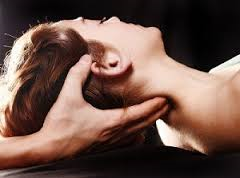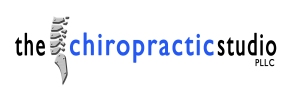
Whiplash associated disorder (WAD) are common injuries of the neck caused by rapid distortion of the cervical vertebrae. Such distortion occurs when the head undergoes a sudden stop while moving at speed, jarring the muscles and ligaments of the neck, which move forwards and backwards quickly. Whiplash is most typically associated with motor vehicle accidents but may also occur in sporting events such as foot ball, bicycling, and horseback riding.
The adult human head weighs about 10-11 pounds, which, at rest, is comfortably supported by the bones and muscles of the neck. However, rapid movement backward and forward put a much larger load on the cervical vertebrae and ligaments holding them in place. The anterior longitudinal ligament that runs down the back of the spine is particularly at risk of stretching or tearing during a rapid collision.
The signs and symptoms of whiplash range from mild neck pain for a few days after the injury to headaches, arm pain and long-term restricted movement of the neck. Studies have shown that whiplash injuries can also constrict blood flow to the brain, leading to light-headedness, poor concentration and fatigue.
The Grade Classification is as follows:
0. No complaint about the neck. No physical sign.
I. Neck complaint of pain, stiffness or tenderness only. No physical signs.
II. Neck complaint and musculoskeletal signs. Musculoskeletal signs include decreased range of motion and point tenderness.
III. Neck complaint and neurological signs. Neurological signs include decreased or absent deep tendon reflexes, weakness and sensory deficits.
IV. Neck complaint and fracture or dislocation.
The recommended chiropractic treatment will depend on the severity of the injury, but common actions include treatment with heat and cold, massage, chiropractic manipulation and a specific program of exercises to gently regain the full range of neck movement. Collars may also be used to keep the neck in place for 72 hours after grade II and III injuries to give the muscles and ligaments time to recover. If you have to wait for an appointment, a frozen ice pack held against the neck for short periods is a good stop-gap treatment for moderate neck pain until you can see a chiropractor.
Grade IV whiplash is a serious injury and your chiropractor can refer you to a specialist for treatment. This will at minimum consist of several months of neck immobilization and possibly surgery. Most whiplash injuries are much less serious than this and are more likely to be a cause of pain and discomfort than a true medical emergency. Though, as anyone who had suffered with whiplash will tell you, the distress associated with ongoing neck pain and stiffness can have a substantial impact on daily life. It is well worth getting check over by a chiropractor if you experience any signs for whiplash in order to reduce your healing time and your chances of future neck complaints.
1905 E. Big Beaver Rd • Troy, Mi 48083 • V. 248.720.0444
http://www.thechirostudio.com

